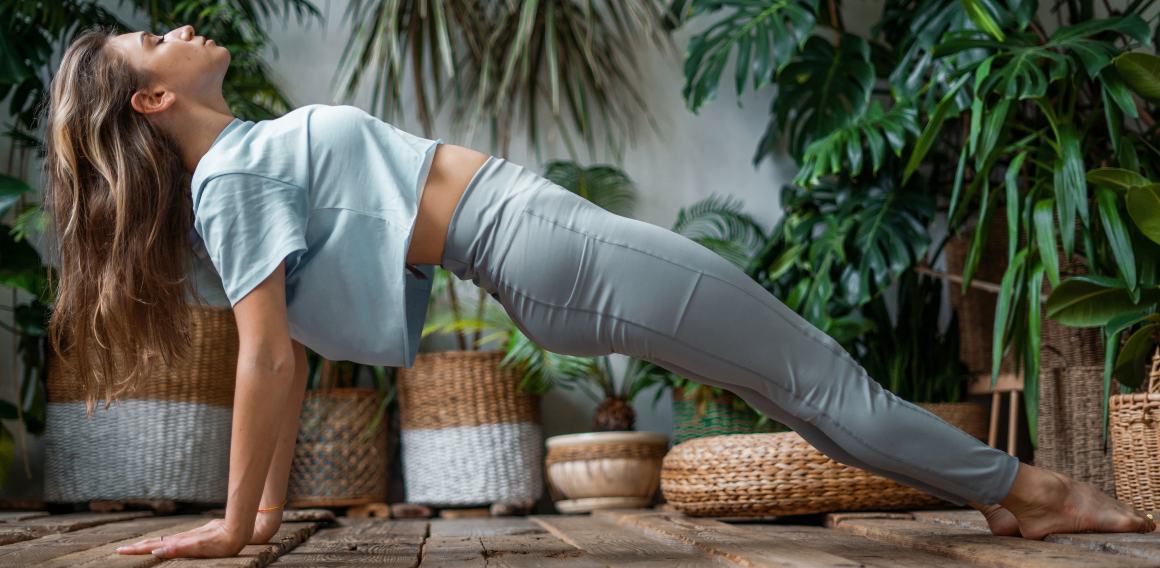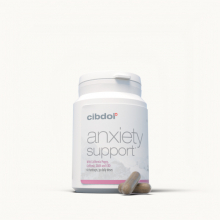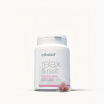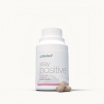Which exercise is best for anxiety?
Published:
Anxiety is one of the most common mental health issues, affecting over 284 million people worldwide. Symptoms of anxiety include excessive worrying, feeling agitated, restless, fatigued, irritable, muscle tension, difficulty sleeping, and panic attacks. While medication can help manage anxiety, lifestyle changes like exercise can also make a big difference. But with so many types of workouts available, which exercise is actually the best for reducing anxiety levels?
Contents:

The Impact of Exercise on Anxiety
Research has shown that exercise can be just as effective as medication and psychotherapy in reducing symptoms of anxiety. Exercise releases endorphins, which are "feel good" chemicals that act as natural painkillers and mood boosters. Being physically active also reduces levels of the body's stress hormones, like cortisol and adrenaline.
Additionally, exercise improves sleep quality, which is often disrupted by anxiety. Better sleep leads to feeling more refreshed and calm overall. Some studies have found that just a single session of exercise can immediately reduce anxiety sensitivity and symptoms. Other research shows that regular workouts over time can help lower anxiety long-term.
Factors That Determine the Best Exercise for Anxiety
There are certain factors that make some types of exercise more beneficial for anxiety than others. The ideal workout for reducing anxiety will:
- Be rhythmic and repetitive
- Require focus and attention
- Involve controlled breathing
- Get your heart rate into the target zone
- Use major muscle groups
- Fit your personal preferences
The right balance of these elements will help provide maximum anti-anxiety and stress-relieving benefits from your workout.
Rhythmic and Repetitive Motion
Exercises that are rhythmic and repetitive—where you repeat the same type of motion over and over—are very meditative. This includes running/walking, swimming, rowing, cycling, dancing, etc. The repetitive movements help clear your mind, improve focus, and promote a calming effect.
Requires Focus and Attention
Since anxiety often involves worrying thoughts and a busy mind, exercises that require more focus and attention can distract you from these thoughts. Sports like golf, rock climbing, martial arts, and yoga require coordination and concentration, giving your brain something productive to focus on rather than ruminating on anxious thoughts.
Controlled Breathing
Many forms of exercise naturally promote deeper, more controlled breathing. This helps reverse the short, shallow breathing commonly caused by anxiety. Deep breathing also activates the parasympathetic nervous system, promoting relaxation.
Gets Your Heart Rate Up
Moderate to vigorous exercise that elevates your heart rate releases more mood-boosting endorphins than lower intensity workouts. Experts believe getting your heart rate up to 50-85% of your maximum for at least 20-30 minutes enables optimal anxiety relief.
Uses Major Muscle Groups
Exercises that incorporate large muscle groups like the legs, back, and chest have been shown to have greater anti-anxiety effects. These larger muscles require more energy and strength, helping better physically exhaust and calm your body.
Fits Your Preferences
You will get the most anxiety-relieving benefits from a workout that you find enjoyable and sustainable. Exercising outdoors, listening to music, working out with a friend, or playing sports you like makes physical activity less of a chore. This encourages consistency, which improves long-term outcomes.
The Best Exercises for Reducing Anxiety
Taking into account all of these factors, below are some of the best forms of exercise for anxiety relief:
Yoga
Yoga checks all the boxes when it comes to an anti-anxiety workout. The controlled breathing, rhythmic flowing movements, and mental focus required provide both physical and mental relaxation. Regular yoga practice has been found to decrease stress, lower heart rate and blood pressure, and reduce anxiety sensitivity.
Yoga combines physical postures, meditation, and deep breathing to enhance mindfulness. Moving through the poses brings awareness to tension held in the body and allows you to consciously relax those areas. Different styles of yoga have varying intensities and areas of focus, so there are many options to suit your needs.
Running/Jogging
Aerobic exercise like running and jogging that elevates your heart rate has consistently been shown to reduce anxiety symptoms. The repetitive footsteps, pacing your breathing as you run, and focusing on the path or music rather than worries provides a meditative effect. The endorphins released while running produce calming effects that continue after exercise.
Running is convenient, free, and accessible way to exercise regardless of your fitness level. Start slow with alternating walking and short jogs to avoid burnout. Aim for 20-60 minutes of jogging most days of the week. Outdoor routes with nature or park views provide extra anti-anxiety benefits.
Swimming
The combination of rhythmic breathing, floating freely in water, and muffled hearing underwater makes swimming profoundly relaxing. Research shows swimming helps reduce stress, anxiety, depression, and other mental health issues. The constant sensory inputs, like feeling the water and coordinating strokes, forces you to focus on the present moment.
Swimming laps at a moderate pace for 30-45 minutes can provide both an anxiety-relieving workout and mindfulness activity. The feeling of weightlessness in water makes it an ideal low-impact exercise if you have injuries or mobility issues. Joining a recreational swim team also adds a social component.
Weightlifting
While weightlifting may not seem like an intuitive choice, studies show it can be very effective at reducing anxiety. Lifting weights requires intense focus on proper form, breathing, and activating specific muscles. This combination helps take your mind off worrying thoughts and brings awareness to your body.
The intense muscle exertion of weightlifting leads to a huge endorphin rush post-workout. Weightlifting also boosts confidence as you grow stronger over time. Try 3 sessions per week of moderate weight and high repetitions. Many gyms offer beginner classes and guidance if you're new to weightlifting.
Cycling
Cycling, whether outdoors or stationary, can be both a strenuous cardio workout and a calming activity. The steady pace clears your mind while forests or city views distract you from stressors. Cycling is low impact while still raising your heart rate if you increase resistance or speed.
Aim to bike for at least 30 minutes at a pace that elevates your breathing, but not so intensely that you can't carry a conversation. Listening to music or podcasts can also help focus your brain during the workout. Joining a cycling club adds camaraderie.
Rock Climbing
Rock climbing requires intense concentration and problem solving, which serves as the perfect distraction from anxious thoughts. The total body workout and endorphin rush after a climb will also relax and empower you. Even indoor climbing centers offer an immersive, meditative experience.
While rock climbing does involve facing fears and physical challenges, anxiety shouldn't hold you back. Look for beginner climbing courses and start on lower walls. The mental clarity and sense of accomplishment from reaching new heights makes it well worth facing those fears.
Martial Arts
Practices like Tai Chi, karate, judo, and kickboxing combine physical exertion with mental concentration. Following the choreographed motions demands focus and coordination. The intense workout helps release anxious energy and frustration in a controlled manner.
Martial arts also empower you both physically and mentally. The self-defense aspect increases confidence to manage challenges and fears. Starting at a beginner level and building slowly helps ensure it is not too intensive if you have low fitness. Classes offer structure and social support.
Hiking
Hiking in nature provides both aerobic exercise and peacefulness to help relieve anxiety. Being surrounded by trees, fresh air, and animals has scientific anti-anxiety benefits. The natural scenery gives you a tranquil environment to redirect focus away from ruminating thoughts.
Hiking can be done solo or in groups. Start with shorter, easier trails and work your way up when you have more endurance. Remember to bring water, snacks, first aid supplies, and adequate clothing. Download a trail map ahead of time so you don't get lost. Hiking is extremely accessible and budget friendly.
Additional Tips for Exercising to Reduce Anxiety
- Make it a routine: Scheduling exercise at the same time daily makes it a habit so it’s less likely to cause more stress.
- Start slow: If new to exercising, build up duration and intensity gradually to avoid burnout or injury. Don’t overexert yourself.
- Listen to your body: Take breaks as needed during workouts and rest days for muscles to recover and strengthen.
- Exercise outdoors: Research shows outdoor exercise lowers anxiety more than indoor fitness.
- Find a workout buddy: Exercising with others provides motivation, accountability and companionship.
- Relax afterward: Complement workouts with yoga, stretching, meditation, massage, or sauna sessions.
- Avoid overtraining: Excessive exercise can increase inflammation and anxiety. Follow sensible limits.
- Talk to your doctor: If unsure about fitness with a medical condition, get medical guidance to exercise safely.
Conclusion
Regular exercise is a powerful tool to help reduce anxiety naturally without medication side effects. However, the type of workout matters. Low-intensity activities like yoga, swimming, rock climbing, hiking, and cycling show the most benefit by combining heart-pumping exercise with mental focus and relaxation. Aim for 20-60 minutes of these workouts 3-5 days per week.
Starting an exercise routine can seem daunting, but be patient with yourself. Build up duration and intensity gradually. Recruit a partner for extra motivation and accountability. Exercise is one of the most effective natural remedies for anxiety, so be consistent, listen to your body, and find workouts you enjoy for long-term mental health payoffs. With the right workout plan, you’ll be on your way to reducing anxiety and improving overall well-being.
Resources used to write this article
Anxiety and Depression Association of America. (2022). Exercise for anxiety and depression. https://adaa.org/living-with-anxiety/managing-anxiety/exercise-anxiety-and-depression
Bahrke, M. S., & Morgan, W. P. (1978). Anxiety reduction following exercise and meditation. Cognitive Therapy and Research, 2(4), 323-333. https://doi.org/10.1007/BF01172650
Bartley, C. A., Hay, M., & Bloch, M. H. (2013). Meta-analysis: Aerobic exercise for the treatment of anxiety disorders. Progress in Neuro-Psychopharmacology and Biological Psychiatry, 45, 34-39. https://doi.org/10.1016/j.pnpbp.2013.04.016
Brosse, A. L., Sheets, E. S., Lett, H. S., & Blumenthal, J. A. (2002). Exercise and the treatment of clinical anxiety disorders. Sports Medicine, 32(15), 841-860. https://doi.org/10.2165/00007256-200232130-00001
Jayakody, K., Gunadasa, S., & Hosker, C. (2013). Exercise for anxiety disorders: Systematic review. British Journal of Sports Medicine, 48(3), 187-196. https://doi.org/10.1136/bjsports-2012-091287
Mochcovitch, M. D., da Rocha Freire, R. C., Garcia, R. F., & Nardi, A. E. (2016). A systematic review of fMRI studies in generalized anxiety disorder: Evaluating its neural and cognitive basis. Journal of Affective Disorders, 191, 263-271. https://doi.org/10.1016/j.jad.2015.11.055
Petruzzello, S. J., Landers, D. M., Hatfield, B. D., Kubitz, K. A., & Salazar, W. (1991). A meta-analysis on the anxiety-reducing effects of acute and chronic exercise. Sports Medicine, 11(3), 143-182. https://doi.org/10.2165/00007256-199111030-00002
Stonerock, G. L., Hoffman, B. M., Smith, P. J., & Blumenthal, J. A. (2015). Exercise as treatment for anxiety: Systematic review and analysis. Annals of Behavioral Medicine, 49(4), 542-556. https://doi.org/10.1007/s12160-014-9685-9
Streeter, C. C., Gerbarg, P. L., Saper, R. B., Ciraulo, D. A., & Brown, R. P. (2012). Effects of yoga on the autonomic nervous system, gamma-aminobutyric-acid, and allostasis in epilepsy, depression, and post-traumatic stress disorder. Medical Hypotheses, 78(5), 571–579. https://doi.org/10.1016/j.mehy.2012.01.021



















